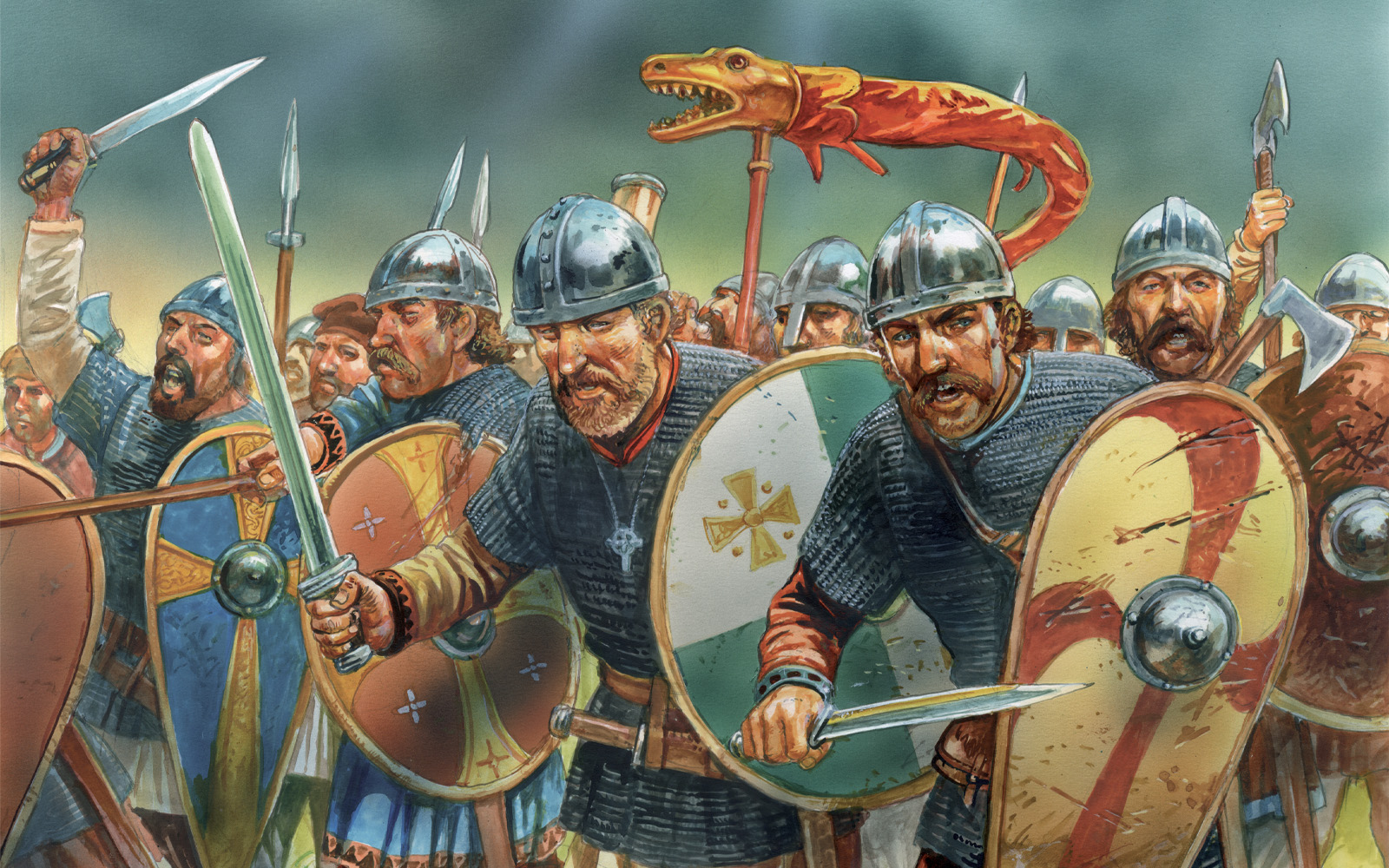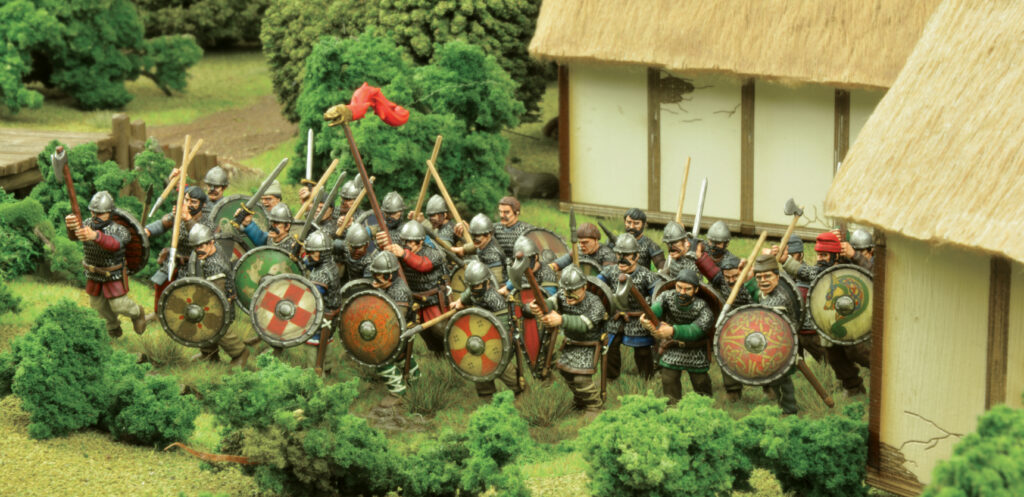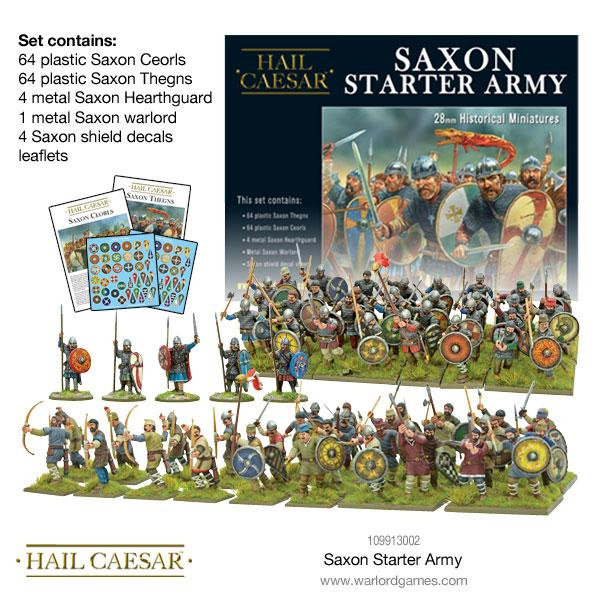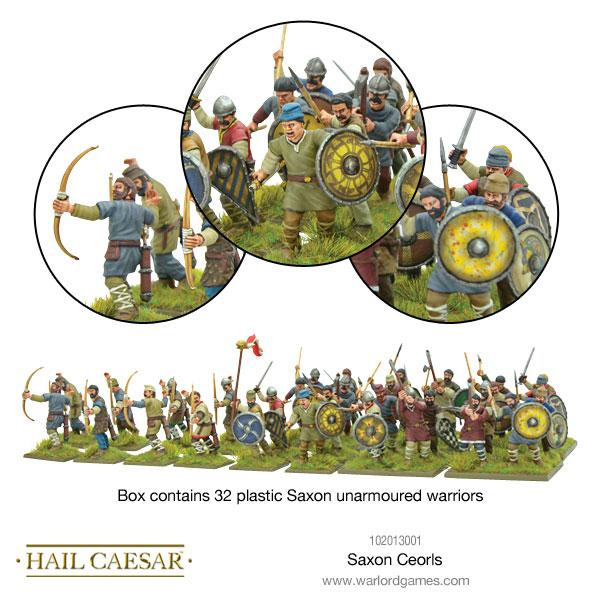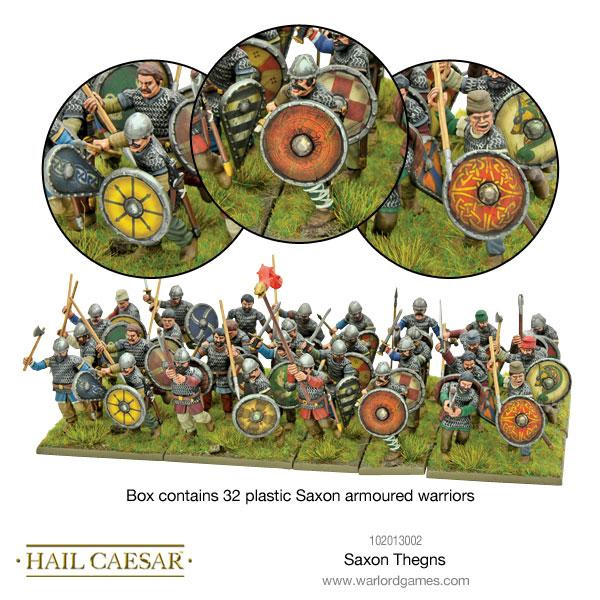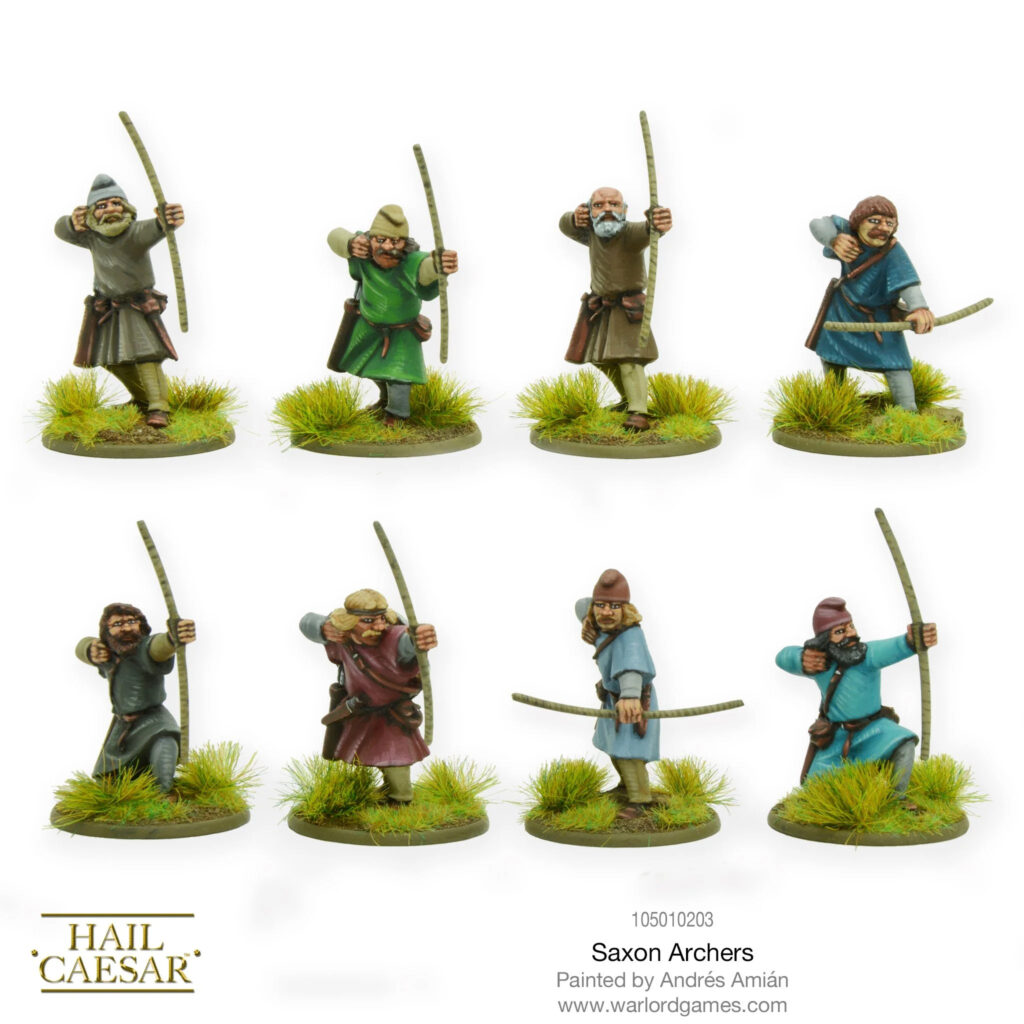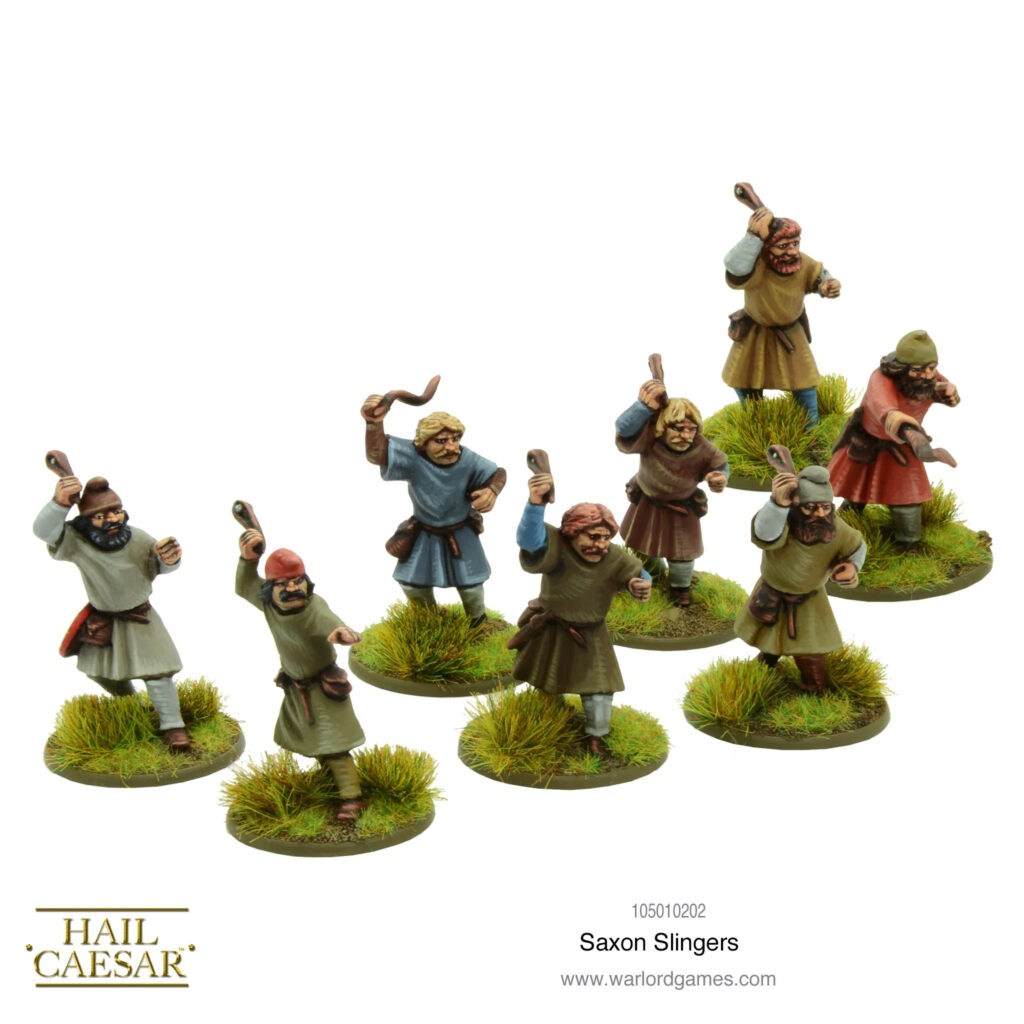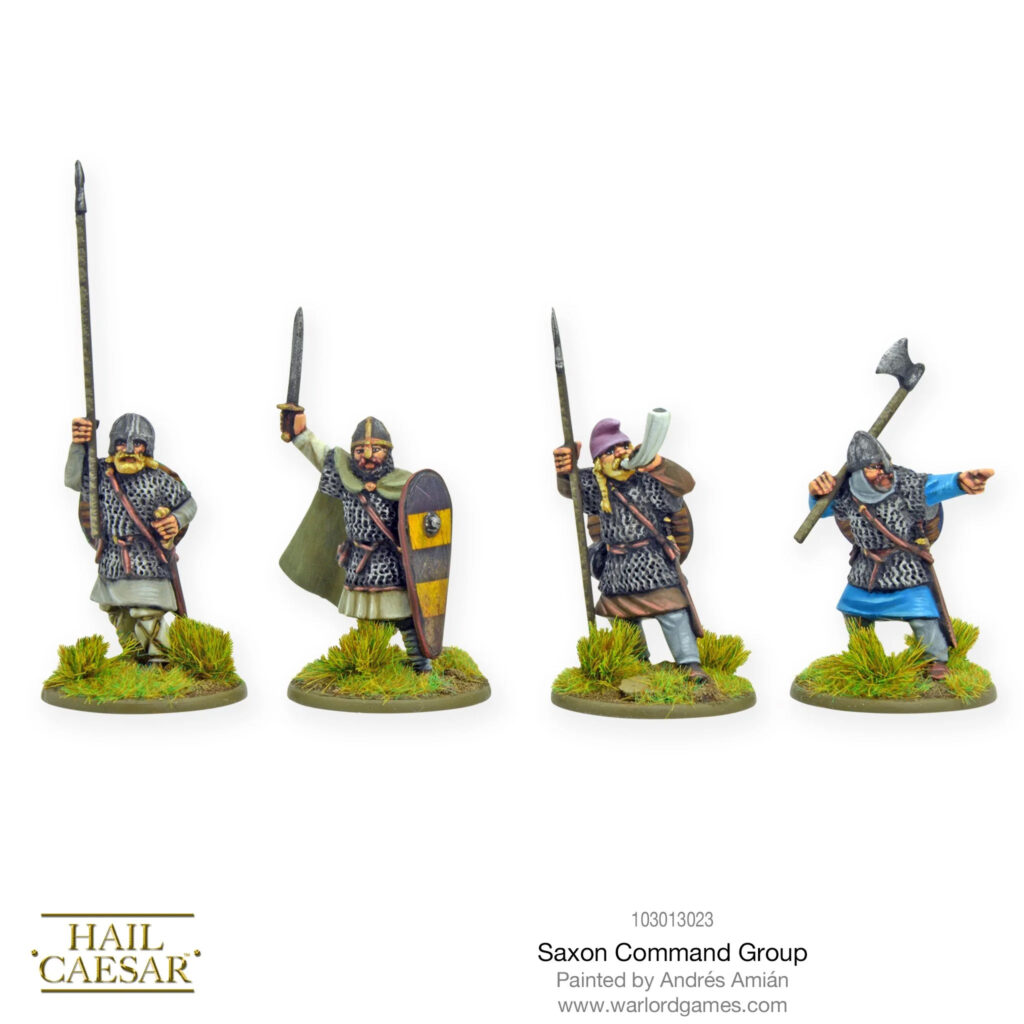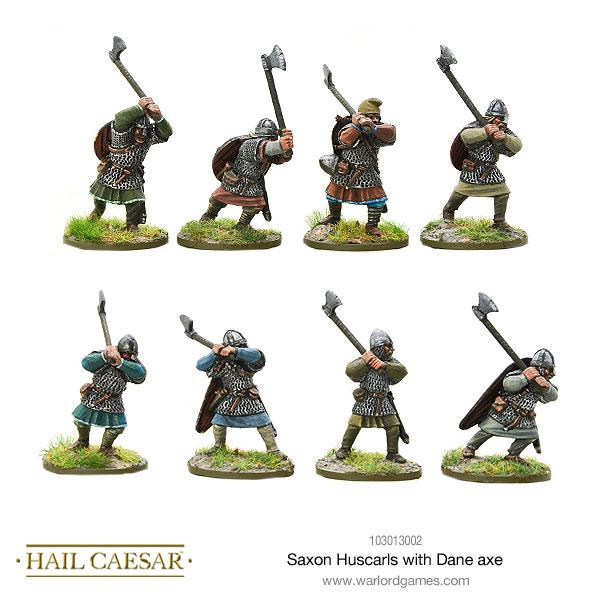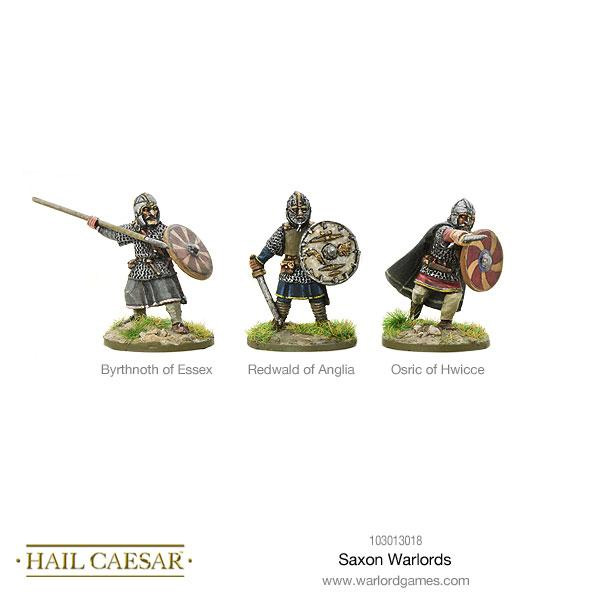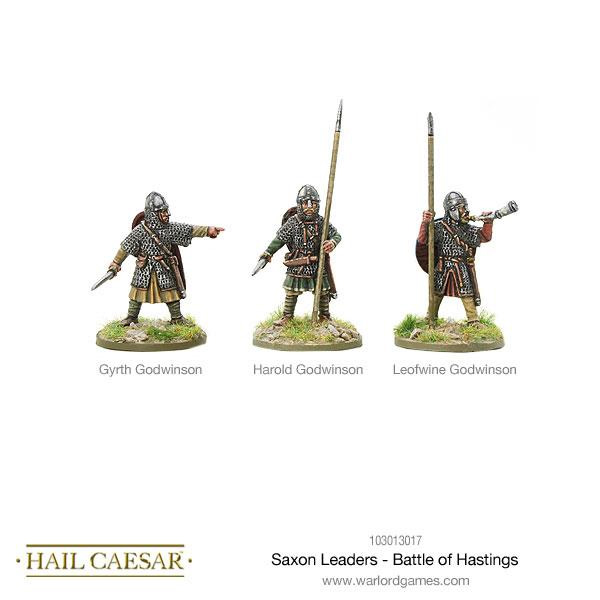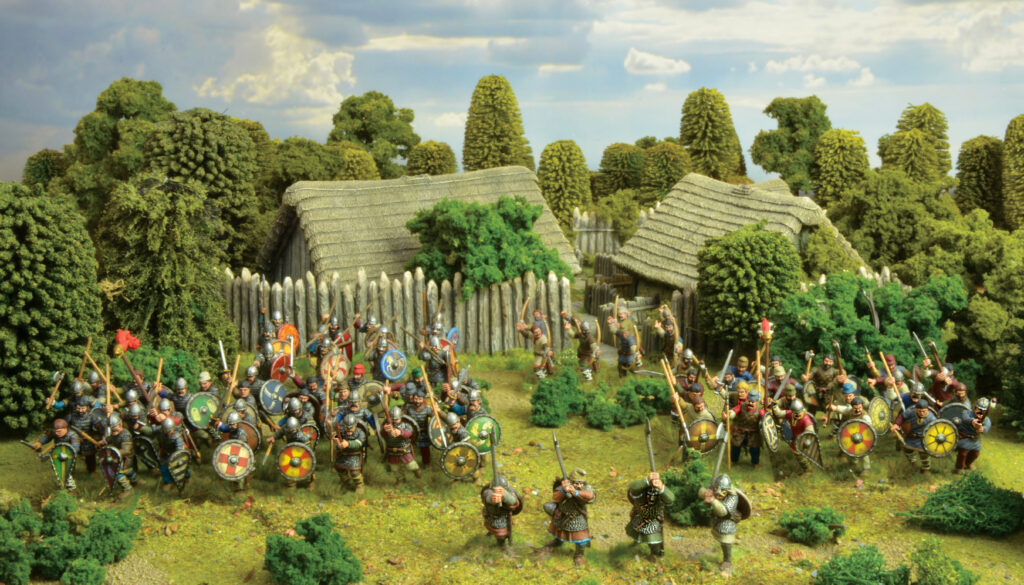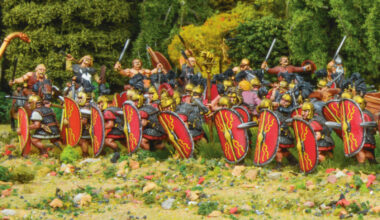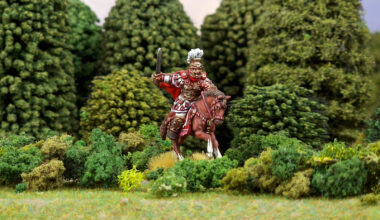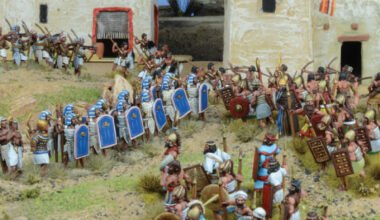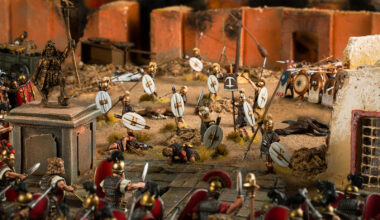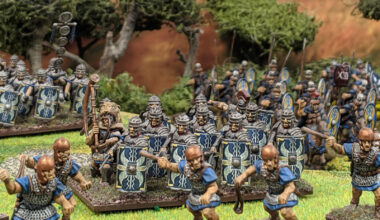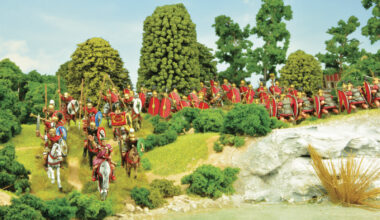Much is made of the Roman, Viking, and Norman invasions of Britain, but I’ve always felt that the Saxons were somewhat neglected by history, outside of the Bayeux Tapestry (unsurprisingly not particularly sympathetic to their cause) and a perception of them as supplying endless defenceless monks to Viking raiders! The settlement of Britain by the Germanic peoples, most notably the Angles and Saxons (from whence ‘Anglo-Saxon’, from whence ‘England’) in the 5th and 6th Centuries AD and their subsequent rule until 1066 contributed significantly to early British culture, and is a fascinating period to wargame – luckily, we’ve got you covered with all the miniatures you need to conquer the old Roman province… and hold it against all comers!
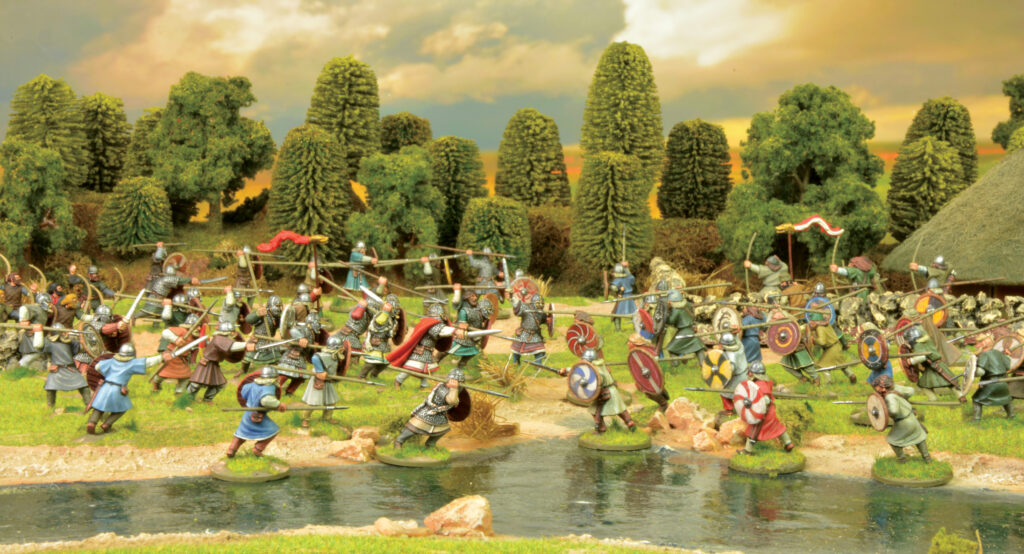
Saxon armies worked under a system known as the fyrd, a levy of local men supporting the trained core of a lord’s forces. These free men, the peasantry that made up the majority of Saxon society known as ceorls or churls, would serve in their local fyrd for short periods of time, not unlike the system of array of later Medieval England, and were generally only called up for regional defence against the kind of raids favoured by the Vikings. There was also a national fyrd which could be activated by the king, but in practice would often be too slow to muster to effectively respond to developing incidents. In essence, the fyrd can be thought of as somewhat similar to the modern-day US National Guard or British Territorial Army units, whilst the equivalent of regular military forces were the thegns, lower-ranking nobility of Saxon England, and the huscarls, the personal guard of royalty and high-ranking nobles. Combined, they formed a primarily infantry-focused army (Britain never having had a particularly strong cavalry tradition throughout antiquity and the medieval period), although many of the richer men would certainly have ridden at least as far as the battlefield.
One of the great things about a Saxon force for Hail Caesar is that you’ll never have a shortage of Dark Age enemies, and many of your models will do just as well in the 6th Century as in the 11th; much of the kit remains essentially the same, at least for the scale of Hail Caesar. For the earliest end of the period, the Arthurian Romano-British range has you covered (and also serves nicely for Saxon Shore limitaneii, but that’s for another article!) – for the rest of the era, you really can’t go wrong with the Starter Army! With 64 unarmoured ceorls to form your fyrd and 64 armoured thegns as the central core of the army, all led by a warlord (a miniature exclusive to this boxed set) backed up by his huscarls, you get a rock-solid division right out of the box (pun intended), with your core infantry in hard plastic. A budget-conscious Earl could simply pick up several of these boxes and raise a perfectly excellent fyrd but they’d be doing themselves a disservice, as the range of metal figures can make a Saxon army really shine!
Whether you’re after maille-clad thegns, mighty huscarls brandishing fearsome Dane axes, or unarmoured ceorls with bows or slings, the metal Saxon range is absolutely packed with character, and is a dream for painters of all kinds. If, like me, you want to get an army on the table quickly, they lend themselves to quick, simple schemes, while retaining more than enough detail for high-level painters to really go to town on. Any self-respecting Saxon general needs at least a few of these fantastic figures to really elevate their force, as they make excellent centrepiece figures either alone or as full units. There are also a selection of historical commanders, including probably my favourites, Byrthnoth of Essex (made famous at the Battle of Maldon, 991AD) and Redwald of Anglia, resplendent in the helmet that would later be discovered at Sutton Hoo and become the very literal ‘face’ of the Anglo-Saxon period.
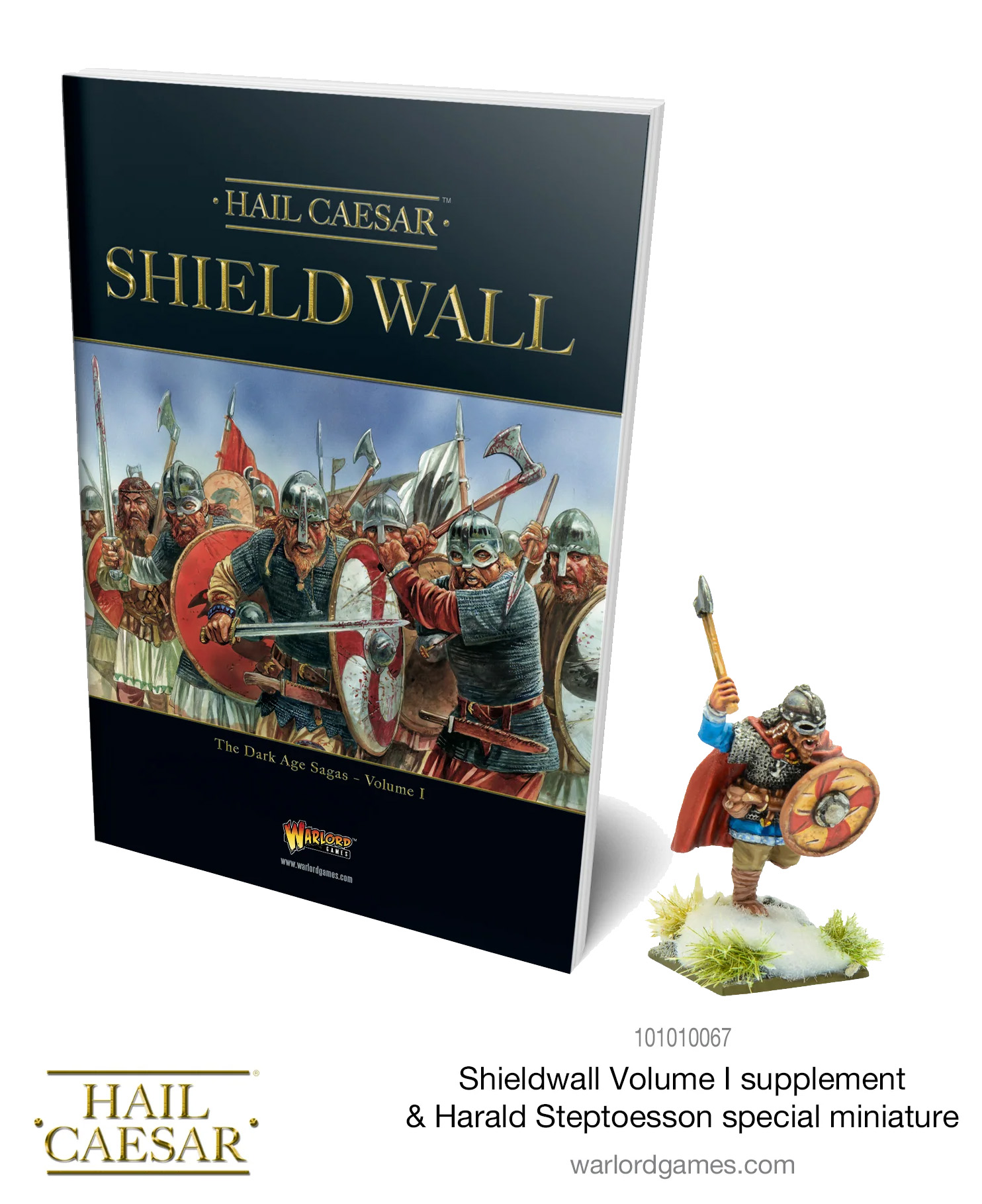
Rules for fielding Saxon forces in games of Hail Caesar can be found in the Shield Wall Volume One supplement, or on page 112 of Army Lists: Biblical to Early Medieval, and we can see that they’re a rock-solid infantry-focussed force with access to excellent heavy infantry in the form of huscarls and thegns. Ceorls can provide plenty of infantry bulk, or be equipped as skirmishers with bows and slings, and there’s even the option to take small units of mounted thegns – just for those who can’t do without some horsemen in their army! The huscarls are the real stars of the force – if equipped with double-handed axes they have a whopping Clash of 8 and Sustained of 7 – perfect for chopping through Vikings or Normans alike! Even the lowly ceorls have a respectable 6/6, and at 23 points per unit for your ‘basic’ infantry, they aren’t overly pricey! Tactically, I’d suggest following Harold Godwinson’s advice at Hastings – form a solid defensive line, keep the formation tight, and if you must advance, do so in unison at a steady pace. Don’t go running off after horsemen (they’re faster than you!), but keep grinding forward and you’ll find there’s very little that can stand in your way.
Vivat Harold Rex!
